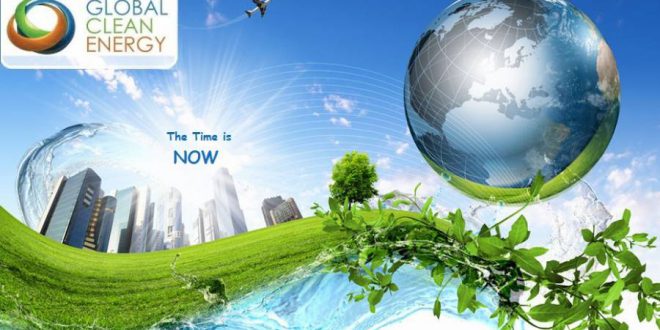Studies have demonstrated that China has been producing and using freon gas in violation of an international agreement banning the substance as destructive to the ozone layer.
An international research group. which included a team of researchers led by Park Seon-young. professor of earth systems science at Kyungpook National University (KNU). announced on May 23 that analysis of observation data from South Korea and Japan confirmed much of the world’s recently increased concentrations of freon gas in the atmosphere to have been emitted in China’s northeast. The team’s findings were published in the May 22 issue of the science journal Nature.
Located in the stratosphere. the ozone layer serves to block harmful ultraviolet (UV) rays. Substances in the category of chlorofluorocarbons (CFCs. commonly referred to by the DuPont brand name Freon.) have a destructive effect on the layer. The most high-profile substance implicated in destruction of the ozone layer is freon gas (CFC-11). which has been the subject of a full-scale global ban on production and use since the Montreal Protocol in 1987. A blowing agent. freon gas had been used for insulation in buildings and cooling equipment. The Montreal Protocol was the first agreement in UN history to win worldwide approval. with the European Union and 196 countries currently taking part. Thanks to reduction efforts by the advanced economies and other countries. atmospheric freon gas concentrations began to decline in the mid-1990s. as of 2010. all use of freon gas was banned even in developing countries. including China.
But a paper published in Nature last year by the US National Oceanic and Atmospheric Administration (NOAA) noted the slowing of the rate of reduction in worldwide atmospheric freon gas concentrations since 2012. adding that a renewed increase in the difference in concentrations between the Northern and Southern Hemispheres indicated that new freon gas was being emitted in the Northern Hemisphere. Based on data measured in Hawaii and other research findings. the research team identified East Asia as the source of the emissions. but did not clearly specify which region.
For the analysis. Park’s research team applied an “atmosphere-chemistry reverse extrapolation model“ to data from the KNU greenhouse gas observation center in Gosan. Jeju Province. and a Japanese National Institute for Environmental Studies (NIES) observation site on Hateruma Island. The results showed a considerable portion of the increased freon gas emissions recently reported around the world to have originated in northeast China – particularly in the provinces of Shandong and Hebei. The KNU greenhouse gas observation center is considered one of the chief Northeast Asian observation sites in the Advanced Global Atmospheric Gases Experiment (AGAGE). a network of greenhouse gas and halogenated gas observation experts with 11 institutions taking part from around the world.
Analyzing atmospheric freon gas concentrations over a 10 year period from 2008 to 2017. the research team found that changes in background air concentrations (referring to air with little influence from contaminated air. which is considered representative of air quality in clean regions) for Northeast Asia were similar to the global average. while contaminated air concentrations had increased with substantially greater frequency since 2013. Contaminated air concentrations were also consistently observed on Hateruma Island in Japan. although not as clearly as at the Gosan site.
Real emissions much more severe China’s national statistics indicate
Collaboration with foreign research teams from the UK’s University of Britain and Met Office (national weather service). the Massachusetts Institute of Technology (MIT). and the Swiss Federal Laboratories for Materials Science and Technology (EMPA). the research team applied two particle diffusion atmosphere-chemistry models and four reverse extrapolation algorithms to identify the location of changes in freon gas emissions among source regions for air masses arriving in Gosan. Based on the particle diffusion modeling analysis. the scope of regions that could be accounted for with the Gosan and Hateruma data covered nine provinces in eastern China. the Korean Peninsula. and some western regions of Japan.
But while no clear increases in freon gas emissions were observed for the Korean Peninsula or western Japan. a visible rise has been observed in eastern China since 2013. chiefly in the provinces of Shandong and Hebei. As late as 2012. emissions there corresponded to national statistical estimates based on previously recorded production and usage. since 2013. annual emissions have exhibited major differences from the national figures. amounting to more than double those observed for the preceding period.
Calculations showed the amount of freon gas emitted in eastern China over the four-year period from 2014 and 2017 to be approximately 7.000 tons per year higher than was emitted over the five years from 2008 to 2012. The difference accounts for 40–60% of the global increase in freon gas.
“The predictions of possible emissions from existing insulation are far too low for [the difference] to be attributed to emissions of freon gas from insulation used in buildings and cooling facilities built prior to 2010.“ the research team said.
“The current increase in emissions is believed to be the result of new production and usage that is not being reported to UN Environment or the Ozone Secretariat.“ it added.
Park Seon-young. professor of earth systems science at Kyungpook National University
Park Seon-young said. “Large amounts of freon gas are emitted into the atmosphere not only in the production process but also in the process of application as an insulator. so it cannot be stated conclusively that the source of the freon gas emissions is the same as its production location.“
“But the increased emissions that are currently being observed are very likely to represent only a small portion of the total freon gas that is actually being produced. and there could be additional ongoing emissions from new insulators using that freon gas.“ she added.
“This could create setbacks in international efforts to restore the ozone layer to its 1980s level by 2050.“ she predicted.
 Iran Energy News Oil, Gas, Petrochemical and Energy Field Specialized Channel
Iran Energy News Oil, Gas, Petrochemical and Energy Field Specialized Channel




